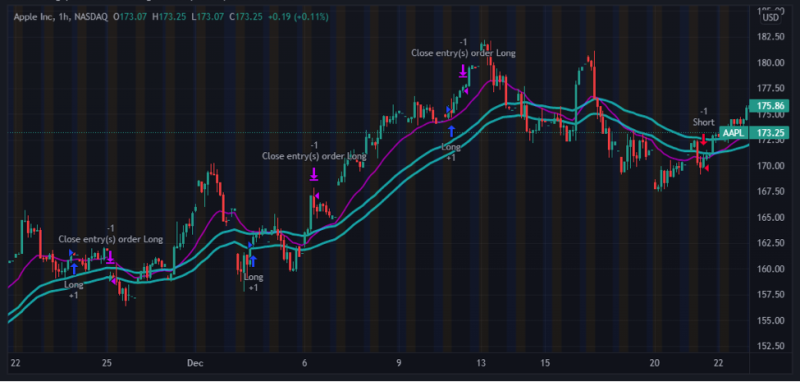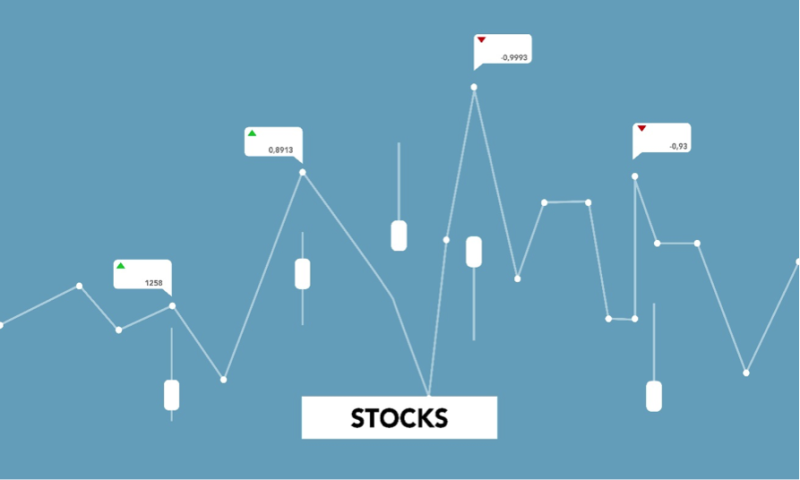In stock trading, there are a variety of trading strategies you can use to be profitable. One of the most popular concepts among stock traders is buying when a stock is low and selling once the stock price increases. This is commonly referred to as the buying low and selling high. It allows traders to make a significant amount of profit as they will sell the security at a higher price.
While this sounds simple in theory, it is much more complex to do in real-time. This is mainly because it is almost impossible to speculate stock price movement.
In a bid to try and improve the buy low and sell high stock trading strategy the dip and rip strategy was born. In this article, we will take you through the ‘dip and rip’ strategy and pattern, and key takeaways to remember while trading using this specific strategy.

Also Read: Copy Trading
Contents
- What is the ‘Dip and Rip’ Strategy?
- Dip and Rip Pattern
- How to Trade the Dip and Rip Pattern
- Conclusion
- FAQs
What is the ‘Dip and Rip’ Strategy?

The dip and rip method involves buying a stock, one that had a high open but then dipped, during the dip and selling it once the price increases. Simply put, it is a combination of buying the dip and selling the rip trading strategies.
Buying the dip is a common investment method among traders, where traders make buy orders when the prices of a stock fall (dip) below their average. They then sell these stocks for a profit once their prices increase.
Mostly buying the dip occurs in a bullish trend, where traders wait for price pullbacks to make buy orders and sell once the prices continue in an uptrend. It can also be considered as going long on a stock, as traders expect the price of a stock to increase.
Selling the rip involves shorting a stock that is already declining in price. Investors usually identify a stock that continues to dip in prices and then ride the bearish trend by opening sell orders. In some cases, traders can wait for bullish price pullbacks before taking a sell position.

Due to the volatility of the financial markets, traders came up with the dip and rip strategy to allow them to make small but consistent profits. With patience and timing, this strategy has proven to be successful as price pullbacks are almost a guarantee in a volatile market. However, this is not always the case, in the case where the price does not pull back, a trader needs to know when to close orders as he might incur a significant loss if the trade continues to run against him.
The dip and rip trading method is most popular among day traders and scalpers. This is because it is a short-term strategy and hence not suitable for swing traders as they hold their trades for longer periods.
Dip and Rip Pattern
The ‘dip and rip’ pattern is a common trading pattern characterized by dips and price pullbacks in a specific market direction. It is most common in its bullish form as prices tend to increase steadily in contrast to falling rapidly.
This pattern often starts with a strong opening (usually a rapid price increase) followed by a dip in prices. The price will then jump back in a bullish manner to an even higher high than the previous peak point. This price action repeats itself for a given period, up to when the price gets to a peak, and then makes a final bearish reversal or consolidation at a specific region.
This movement of prices is mostly driven by market psychology as investors usually get in at the early stages just when the price starts increasing to ride the course of the uptrend. However, once the price pulls back, many traders panic and close their orders to lock up their profits, however minimal.
This causes the prices to continue dipping presenting an opportunity to traders who intend to dip and rip. Traders who buy the dip then wait for the prices to continue rising again, after which at a certain price point they sell (rip) in anticipation that the price will dip (pullback).
If handled correctly the dip and rip pattern will allow you to make significant and consistent profits. It is difficult and almost impossible to predict a change in market direction. For this reason, dip and rip ga is all about patience and timing. Most traders, either from technical analysis, news such as tax implications, or other trading techniques can predict that a stock’s price will continue rising. However, due to lack of patience, panic, or risk management, get out of trades especially after a quick dip.
Below is an example of a dip and rip pattern on the Apple Incorporated Stock Chart .

Also Read: Everything About Implied Volatility
How to Trade the Dip and Rip Pattern
Trading the dip and rip pattern is can be compared to playing a simple but serious game. It involves waiting for the prices to drop to the right support level then opening a buy position with the hope of ripping just before the price starts pulling back. Below are some trading tips for dip and rip investing:
- Timing
To successfully dip and rip in the stock market, you need to know at what point you will open and close a trade. Most traders use other indicators and news around specific stocks to decide the point at which they will open or close their trades.
With the right timing, you are guaranteed much better results compared to traders who just enter the markets based on a hunch and without a good reason. Due to the nature of the stock market the dip and rip investment method is best suited for short-term investors compared to longer-term investors.
A good time to use the dip and rip pattern would ideally be in the morning after a false but strong opening. Traders usually enter with buy orders and soon overpower the market, after which they panic sell. This creates the perfect opportunity to buy the dip and rip when the prices start picking up again.
- Discipline
Sometimes a stock’s price may dip below the expected support point or region. When this happens, it is up to you as a trader to close the trade and cut your losses. Failing to do so may lead to even further loss as you hope that the price will bounce back up.
Discipline also involves knowing when to take your profits as you rip, especially in an uptrend. This is because the price may reverse leading to a smaller profit or even loss in case a complete reversal occurs.
- Choose the right stocks

Not all stocks dip after a huge gain. Some stocks will increase in price consistently while others may dip continuously. When this happens, it can cause you significant losses as you try to dip and rip.
It is important to know or at least carry out technical analysis to determine the average dip of a specific stock. For the morning dip, most stocks dip up to between 30% and 35%. Choosing the right stock also involves looking out for news or company releases. This will help you predict the dips and make more profit.
Conclusion
The dip and rip method is a tried and tested technique that allows investors to make significant profits by taking advantage of volatility in stock markets. Investing in these markets involves a lot of risks and could blow your account, especially if it is a smaller account. For this reason, it is advisable to have a proper risk management system.
FAQs
What does dip and rip mean in stocks?
‘Dip and rip’ is a stock pattern or strategy where traders buy stocks while their prices have dropped and sell the stocks after the prices increase (rip) for profit.
Should you buy the dip?
More often than not, buying the dip is a good idea. This is because it presents a low-risk trading opportunity especially if the you expect a bullish trend to form.



